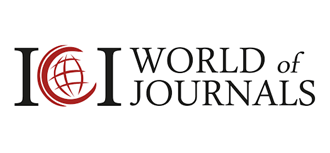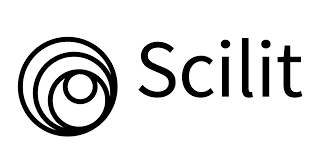Recovery and Assessment of Pomological Diversity of Sweet Orange (Citrus sinensis L. Osbeck) Cultivars in Tunisia
Selma Ben Abdelaali1*, Olfa Saddoud Debbabi2,3, Mohamed Rabah Hajlaoui4, Nasr Ben Abdelaali5 and Messaoud Mars1
1IRESA -University of Sousse Department Agronomic Institute (ISA), Tunisia
2National Gene Bank (BNG), Tunisia
3University of S fax, Institute Del ‘Olivier, Tunisia
4IRESA-University of Carthage, National Agricultural Research Institute of Tunisia, Tunisia
5IRESA-University of Carthage, National Institute of Agricultural Research of Tunisia, Tunisia
Submission: May 13, 2021;Published: June 06, 2022
*Corresponding author: Selma Ben Abdelaali, IRESA -University of Sousse Department Agronomic Institute (ISA), Tunisia
How to cite this article: Selma B A, Olfa Saddoud Debbabi, Mohamed Rabah Hajlaoui, Nasr Ben A, Messaoud M. Recovery and Assessment of Pomological Diversity of Sweet Orange (Citrus sinensis L. Osbeck) Cultivars in Tunisia. JOJ Hortic Arboric. 2022; 3(3): 555616. D. DOI 10.19080/JOJHA.2022.03.555616.
Abstract
Citrus fruits are among the most popular crops worldwide. Its species are cultivated all over the world not only for their economic values and nutritional properties but also for their valuable genetic material in breeding process. In Tunisia, Citrus industry occupies also a paramount importance in the agricultural sector being one of the strategic products. However, little is known about the pomological diversity of Tunisian sweet oranges specifically minor cultivars whose description is mainly given through folk tales. Thus, several investigations were undertaken aiming to collect and to characterize the orange local germplasm. These allowed the identification of 25 different local cultivars including minor ones listed for the first time. Ten quantitative and 19 qualitative traits were measured. The experimental results revealed an overall diversity of the local citrus germplasm based on traits as fruit’s dimensions shape and base shape, texture of surface, pulp firmness and vesicle thickness. Factorial Analysis of Mixed Data (FAMD) was very useful in distinguishing local orange cultivars. Superior traits characterized mainly the minor cultivars such as ‘Boukhobza’, ‘Meski Ansli’, ‘Meski Ahmer’, ‘Ballerin’, ‘Malti Twil’, ‘Beldi Abiadh’, ‘Beldi Ahmer’ and ‘Malti Trabelsi’ pointing out the need to conservate it to avoid the risk of genetic erosion of these ones.
Keywords: Pomology; Local cultivars; Minor cultivar; Superior traits
Introduction
Sweet orange (Citrus sinensis (L.) Osbeck) belongs to the family of Rutaceae and to the genus Citrus that includes several major species cultivated on a very large-scale being fruit-production leaders. It is believed that sweet orange originated from a complex admixture of unknown parents derived from pummel (Citrus grandis (L.) Osbeck) and mandarin (Citrus reticulata Blanco) hybridizations Wu et al. [1] Somatic mutations occur at high frequencies in all the sweet orange varieties leading to a broad spectrum of phenotypes, including changes in fruit shape, color, acidity, maturation season, developmental changes related to sterility, flowering time and tree architecture Wang et al. [2] Usually, sweet orange is categorized into few varietal groups (common, navel, blood, acidless), with a diversification in terms of agronomical features within each group.
In Tunisia, citriculture is spread all over the country in very different climatic and edaphic zones where the Cap-Bon peninsula (Nabeul governorate, Northeast of Tunisia, 37° 05′ N 11° 02′ E) holds the oldest plantations occupying the first place in terms of areas and production (80% of national production) (DGPA, 2017). This area has been exposed to different influences over the time. In fact, although Citrus fruits are not native to our lands, some plantations are very old where the Arabs started to spread the cultivation of lemons and sour oranges. Then, industrial Citrus cultivation was established after the French occupation with the creation of the trial garden in 1893. Thus, several local cultivars were traditionally cultivated and related to our region for centuries. In fact, local fruit varieties represent an important plant genetic resource that will be especially important in the future, however, these resources are underestimated, and they are still unidentified and not well described. Therefore, the pomological characterization of these genotypes will be the first step of their evaluation and identification. In fact, some previous studies reported the pomological characterization of some local Citrus cultivars Lasram & Saddoud Debbabi et al. [3,4] however, none of these studies focused on the marginalized orange cultivars held in the old orchards which are constantly decreasing owing to the extension of the urbanization Snoussi et al. [5] Thus, the main Tunisian local cultivars present in orchards were inventoried and with the collaboration of farmers and regional agriculture development, agencies and the prospections were repeated during two consecutive years. These prospections allowed the distinguishing of 22 different Tunisian cultivars belonging to 5 different groups (Navel, Meski, Malti, Pigmented and Beldi) and three international cultivars used for comparison purposes. The major pomological features were described in the present study then their data were presented and discussed in view of molecular and biochemical results in order to identify correctly neglected local cultivars that could be valuable citrus genetic resources for the national GenBank in Tunisia and citrus breeders in other institutions.
Materials and Methods
Plant material

Introduced varieties used for comparison.
Adopted code at National Gene Bank.
22 Tunisian sweet orange cultivars conserved on farm were considered in this study and divided into groups and classified as frequent, rare and very rare (Table 1). ‘Washington navel’, ‘Moro’ and ‘Double Fine Améliorée’ oranges were also included and considered as a reference to evaluate year-to-year stability of the most important pomological traits and to compare germplasm accessions with valuable cultivars. These cultivars are grown in a traditional Citrus production area located in the Cap-Bon peninsula (Northeast of Tunisia, 37° 05′ N 11° 02′ E). The soil of the orchards was classified as sandy loam. The Mediterranean climate characterizes Cap-Bon region, with a mean annual rainfall of 500mm. Trees were irrigated regularly twice per month from March until October. The average maximum and minimum temperature were 31°C and 8°C, respectively. The different trees were subjected to standard culture techniques and grifted onto Citrus aurantium. Each accession was directly analyzed at the National Gene bank (BNG) laboratories after harvesting.
Fruit sampling and pomological analysis
For morphological characterization, fruit harvesting was repeated for two years 2013/2014 and 2014/2015 between December 1st and March 15th in order to minimize the impact of environmental conditions. 30 mature fruits per tree from the four directions of the trees and inner strata and outside of the foliage were randomly collected. Fruits with abnormalities (sunburns, insect damage, disease ...) have been ruled out. These fruits were divided into 3 batches of ten fruits to analyse ten quantitative and 15 qualitative characteristics following the standard descriptors of the Citrus IPGRI [6]. Analysis has been performed separately for each growing season. Ten quantitative traits were measured: The weight of fruit, the volume of fruit, the fruit equatorial length, the fruit polar length, the thickness of fruit peel, the thickness index, the segment number, the axis diameter, the seeds number and the fruit firmness. The fruit weight was determined using a precision scale 1/100 while the fruit volume was estimated using a 1000 ml beaker with an initial volume of water of 600ml. A digital calliper determined the equatorial and polar fruit diameter. The fruit rind thickness was also measured using a calliper on three distinct sides from each fruit and the fruit firmness was found using a penetrometer. 19 qualitative characters were chosen based on Citrus descriptors [6] as follow: Fruit shape, apex form, base form, texture of the surface, albedo adhesion, adhesion of segments walls, thickness of segments walls, flesh (pulp) firmness, uniformity of the pulp, length of vesicles, thickness of the vesicles, shape of the axis in cross section, fruit axis, presence of oil glands, density of the oil glands, oil glands size, color of the skin, seed form and color of seeds.
Data analysis
Data were obtained in triplicate for each year, then, the data were presented then as mean ± standard deviation. The correlation coefficients between the parameters were determined using the Pearson correlation. Analysis Of Variance (ANOVA) was used to highlight differences between the cultivars studied for a given parameter. The comparison of the averages was done using the variability estimation test for each qualitative trait and calculated using Shannon and Weaver’s Standardized Diversity Index (Shannon and Weaver, 1949), as referred to by Al Khanjari et al. [7] It conceived in the form H0 and has the formula: H0=-P pi (log2 pi)/log2 n, where pi=frequency proportion of each state of the descriptor and n=number of states for each descriptor. The joint analysis of the different qualitative and quantitative parameters was carried out by Factorial Analysis of Mixed Data (FAMD). The projection of all individuals took place on the plans defined by the first three axes of the FAMD taken two by two. Group analysis was used to determine relationships between cultivars. The groups of cultivars formed were defined by their degrees of similarity. After standardizing the data, the similarity matrix was constructed using the square of the Euclidean distance. A dendrogram was established, with an arbitrary distance scale representing the level of similarity between the cultivars. All statistical analyses were performed using SPSS 17.0 and Excel-stat 2019 software’s.
Results
Local orange cultivar groups and frequencies
The blood and half-blood oranges were diversified in Tunisia, Malta and Sicily. (Ollitrault and Navarro, 2011) The visited farms were mostly monocultural where only citrus trees (orange, mandarin, lemon, sour orange…) are planted. It was possible to inventory 25 old orange cultivars that were divided into five groups: ‘Beldi’ (Beldi Abiadh, Beldi Ahmer), ‘Meski’ (sweet or acidless) (‘Meski Malti’, ‘Meski Ahmer’, ‘Meski Arbi’ and ‘Meski Ansli’ ‘Meski Sifi’ and ‘Meski Boujnab’), ‘Malti’ ((‘Maltaise demisanguine’, ‘Malti Lsen Asfour’, ‘Maltaise Petit-Pierre’, ‘Malti Abiadh’, ‘Malti twil’, ‘Malti Ballerin’, and ‘Malti Boujnab’ ‘Malti Trabelsi’), ‘Pigmented’, (‘Sakasli’, ‘Boukhobza’, ‘Chemi’ and ‘Maltaise sanguine’) and ‘Navel’ (‘Bourouhine’). Three introduced cultivars (‘Moro’, ‘Washington Navel’ and ‘Double fine-améliorée’) were included in this study for comparison (Table 1).
The frequency of cultivars varied largely among the groups and the cultivars themselves. Some cultivars were frequent and were encountered in almost all regions (‘Maltaise demisanguine’, ‘Malti Abiadh’, ‘Bourouhine’). Others like ‘Beldi’ types were localized mainly in 2 old orchards in Bouargoub, thus ‘Beldi Ahmer’ and ‘Beldi Abiadh’ and were considered rare. Other orange genotypes were represented by one tree in a single orchard were considered very rare such as ‘Malti Boujnab’, ‘Meski Ahmer’, ‘Meski Boujnab’, etc.
Pomological diversity of orange fruits based on quantitative traits
Genotype’s characteristics: Cultivars exhibited significant diversity for fruit size parameters. Indeed, the average fruit weight (Pds) was highly significant and ranged from 120g for ‘Moro’ (MRO) to 358.33g for ‘Bourouhine’ (BRH) (Table 2). Fruit volumes (Vlm) varied significantly between the smaller cultivars as ‘MRO’ with only 115 cm3 to the most voluminous such as ‘BRH’, ‘MES’ (435.4g) and ‘WNN’ (358cm3). Statistical analysis showed highly significant differences between cultivars studied for equatorial (Dia) and polar (Hau) diameters. The cultivar ‘BRH’ showed the largest equatorial diameter (93.8mm) and ‘MTW’ the largest polar diameter (106.8mm) while ‘MRO’ had only small dimensions (Dia:60.8mm and Hau:60.5mm) (Table 2). Average fruit peel thickness (Epe) values ranged from 4.4mm for ‘Beldi Abiath’ (BAB) fruits to 9.6mm for ‘Malti Twil’ (MTW). The thickness indices (Ipe) also ranged from 21.6 to 12.9 for the ‘MTW’ and ‘BAB’ cultivars. Firmness (Fir) in turn ranged from 1.7kg/cm2 to 6.8kg/cm2 between ‘Sakasli’ cultivars (SAK) and ‘MTW’ cultivar respectively (Table 2). The highest average number of segments (Nsg) was 11.3 for ‘CHE’ and ‘BAH’ and the lowest was Ahmer’ (MEH) cultivar. A high number of seeds (NPP) characterized ‘MEH’ (13.67) while ‘Maltaise Petit-Pierre’ orange (MPP) and ‘Ballerin’ (BAL) were seedless.

Data are averages ± SD, the averages in each column followed by the same letters are not significantly different at P <0,05 according to Duncan’s multi-range test. Significant to P <0,05; ** Significant to P <0,01.
Pds: Fruit Weight (g); Vlm: Volume of Fruits (cm3); Dia: Equatorial Diameter of Fruits (mm); Hau: Polar Diameter of the Fruits (mm). Epe: Thickness of the bark (mm); Ipe: Index of Bark Thickness; Nsg: Number of Segments; Dax: Diameter of The Axis (mm); Npp: Number of Pips; Fir: Firmness of The Fruit (kg/cm2).
Correlation between quantitative parameters: The correlation coefficients calculated between the quantitative characters of oranges taken in pairs are shown in Table 3. High positive correlations (P ≤ 0.01) were recorded between the weight of the fruit (Pds) and its volume (Vlm) and, between the weight of the fruit and its dimensions (Hau and Dia). These last three parameters were positively correlated to each other. However, the equatorial diameter of oranges seemed to correlate better with fruit volume and weight (Table 3). The diameter of the fruit axis (Dax) was positively and significantly correlated with the size of the fruit (volume, weight and diameter). In addition, the fruit firmness was significantly and positively correlated with the weight and diameter of the oranges as well as the thickness of the peel and the index of its thickness (Table 3 & 4). Thus, large fruits had a peel and were relatively firmer.
Cluster analysis: The cluster analysis based on quantitative traits was performed with hierarchical ascending classification using Pearson method in order to find out the relationship between the cultivars figure 1. In fact, it grouped the accessions into two major clusters. The first cluster (I) was divided into two sub-clusters. Sub-cluster I-A consisted of 1 accessions (‘Malti Twil’, (MTW)), the sub-cluster I-B included the 3 cultivars ‘Bourouhine’, (BRH), ‘Washington Navel’, (WNN) and ‘Meski Ansli’, (MEA). The second cluster (II) contained three sub-clusters. Sub-cluster II-A consisted of 11 accessions, which were for most of them ‘Malti’ cultivars. Moreover, sub-cluster II-B included five accessions figure 1. Sub-cluster II-C included the rest of cultivars whose common character was the high number of seeds.
Pomological diversity of orange fruits based on qualitative traits
Qualitative traits were estimated for orange accessions. The shape of the fruit was diverse among the samples being spheroid, ellipsoid, obloid or periform. All “Malti” cultivars (exepting ‘Malti Mdawer’ (MDW)) showed a characteristic ellipsoid shape. The cultivar ‘Boukhobza’ (BKH) exhibited a specific pear-shaped form. The fruits of ‘Meski Ansli’ (MES), ‘Meski Ahmer’ (MEH) and ‘Bourouhin’ (BRH) were oblong, while all the others were spheroid. The shape of the apex of the fruit was either rounded or truncated, while the shape of the fruit base was more diversified varying from convex or truncated to concave and in some cases concave to collar like for cultivars ‘CHE’, ‘MBM’ and ‘MTW’. ‘Maltaise Demi-Sanguine’ (MDM) exhibited a convex shape at the base and was truncated for the apex. The texture of the surface varied widely being smooth, rough, pitted or bumpy. The ease of fruit peeling was expressed by the parameter of adhesion of the albedo (mesocarp) to the pulp (endocarp). There was significant variability of this parameter; some cultivars were easily peeled like ‘MEM’, ‘MTW’, ‘WNN’, ‘BKH’ and ‘SAK’ while others no. The oil glands were perceptible on ‘Ballerin’, ‘Sakasli’, ‘’Boukhobza’, ‘Meski Ansli’, ‘Malti Abiadh’, ‘Meski Malti’ and very perceptible for ‘Maltaise demi-sanguine’, ‘Meski Arbi’, ‘Meski Ahmer’ and ‘Meski Sifi’. The density of the oil glands on the surface of the fruit was intermediate (45-65/cm2) for most cultivars and it was high (>70/cm2) for ‘Maltaise demi-sanguine’, and ‘Meski Ahmer’. The oil glands were small (<0.8mm) for the rest of the cultivars. The color of the skin was also different depending on the cultivars it diverged from light orange for all cultivars ‘Meski’ (except ‘Meski Malti’) to red orange in other cultivars. Fruit pulp was not uniform for blood or pigmented oranges. Concerning the fruit axis and the shape of its section, some cultivars showed a solid axis with a cross section as ‘BAH’, ‘BAB’, ‘MSW’, ‘BAL’, ‘DFM’, ‘MRO’, other presented a semi-hollow irregular section (‘MES’, ‘MDM’,’MSS’.) or hollow with round cross-section (BKH) or solid axis with an irregular section such for navel oranges (‘WNN’ and ‘BRH’). The segment walls of almost all ‘Malti’ (except for ‘MTW’) cultivars were the thinnest and those of the thickest ‘Meski’ cultivars, the wall thicknesses of the remaining cultivars were average. Segment separation was easy for ‘MEI’, ‘MLS’, ‘MDM’, ‘BKH’ and ‘SAK’ and difficult for ‘DFM’, ‘MRO’, ‘BRH’, ‘MPP’, ‘MTR’, ‘MEA’ and ‘MBB’. However, the observed shape of the seeds and their color were identical. They were semideltoid cream.

Pds: Fruit Weight (g); Vlm: Volume of Fruits (cm3); Dia: Equatorial Diameter of Fruits (mm); Hau: Polar Diameter of the Fruits (mm). Epe: Thickness of the bark (mm); Ipe: Index of Bark Thickness; Nsg: Number of Segments; Dax: Diameter of The Axis (mm); Npp: Number of Pips; Fir: Firmness of The Fruit (kg/cm2).

aObserved class defined on the basis of the IPGRI descriptor, (1999).
Data of the different qualitative traits selected for this study are summarized in Table 4. Forty-one classes were found for the 15 parameters measured. The shape of the fruit and its base as well as the texture of its surface were the most diversified traits presenting four different phenotypes (Table 4). However, the shape and color of the seed were monomorphic for the accessions studied. Diversity indices (H’) ranged from 0 (for the form ‘FGR’ and color ‘CGR’ of the seed) to 0.97 (for the fruit shape ‘FRF’) with an average of 0.51. Moderately high variability was observed for the shape of the fruit base (0.61), the surface texture (0.5), the pulp firmness (0.53) and the vesicle thickness (0.52). All other characters exhibited a small variation ranging from (0.32-0.40). The first three principal components (F1), (F2) and (F3) accounted for 77.8% of the observed variability. The F1 axis represented 38.7% of the variation and the quantitative characters relating to the dimensions of the oranges (weight, height, diameter and volume) figure 2. F2 accounted for 27.3% of the total variance and the fruit shape and fruit shape characteristics were the most important for determining this component. In contrast, the F3 axis explained 11.8% of the variance, mainly because of the variation of the qualitative trait texture of the fruit surface. The first axis (F1) distinguished two main groups. The two cultivars Navel ‘Bourouhine’ (BRH) and ‘Wasington Navel’ (WNN) accompanied by the orange ‘Meski Ansli’ (MEA) were distinguished by the first axis (F1) and they grouped together. The orange “Malti Twil” (MTW) was isolated from the rest of the cultivars forming the second group. The second axis has defined two major groups. ‘Malti’ cultivars were grouped together (‘Malti Lsèn-Asfour’ (MLS), ‘Malti Trabelsi’ (MTR), ‘Malti Mdawer’ (MDW), ‘Ballerin’ (BAL), ‘Maltaise demi-sanguine’ (MDM), ‘Maltese blonde’ (MSW), ‘Maltaise Petit-Pierre’ (MPP), ‘Maltaise sanguine’ (MSS), and ‘Malti Abiadh Boujnab’ (MBB). The other group contained the blood oranges remaining (‘Moro’ (MRO), ‘Boukhobza’ (BKH), ‘Double Fine-ameliorée’ (DFM), ‘Sakasli’ (SAK), ‘Chemi’ (CHE)), oranges ‘Meski’ (‘Meski Ahmer’ (MEH), ‘Meski Sifi’ (MEI) and ‘Meski Arbi’ (MES)) and the oranges ‘Beldi’ (‘Beldi Ahmer’ (BAH) and ‘Beldi Abiadh’ (BAB)).


Discussion
A multivariate analysis of sweet orange germplasm in Tunisia was held during this survey in order to identify correctly neglected local cultivars that could be valuable citrus genetic resources for the national Gene bank in Tunisia and citrus breeders in other institutions. The cultivar ‘Malti Boujnab’, very rare, was found in a single orange grove represented by a single tree. This fruit presents a specific trait since one fruit side was noticeably harder and less colorful than the other. This cultivar was neglected because its fruits were considered not safe and inappropriate for consumption because its specific trait is confused with an attack with Ceratitis capitata, the Mediterranean fruit fly. ‘Meski’ oranges were considered as very diversified and important group. Cultivars of this group lack acidity and generally have several seeds. These cultivars continue to be appreciated by a certain category of consumers, especially children and the elderly Kimball [8]. They are not exported to European countries but may be of interest for the Gulf country market. The name ‘Meski’ is known in North Africa, particularly in Tunisia and Morocco without targeting a given cultivar although it is rather a qualitative attribute for various cultivars with an absolute pleasant, sweet taste with musky perfume. Only four cultivars were registered in the official Tunisian catalog JORT [9]. ‘Meski Malti’, ‘Meski Ahmer’, ‘Meski Arbi’ and ‘Meski Ansli’. Our research highlighted the presence of cultivars ‘Meski Sifi’ and ‘Meski Boujnab’. The cultivar ‘Meski Boujnab’ has a fruit face harder than the other and with the particularity of sweettasting fruit. These cultivars could be interesting for breeders not only for their adaptation to the Tunisian climate and for drought, but also for the biochemical properties. In fact, we noticed that ‘Meski Ahmer’ (MEH) exhibited a pleasant unique red-pinkish hue, which was attributed to its unusual lycopene accumulation as compared to sweet oranges Ben Abdelaali et al. [10]. Furthermore, the same biochemical study pointed out that ‘Meski Arbi’ (MEA) cultivar was among the richest in total carotenoids and contained the highest concentration of the pigment (9Z)-violaxanthin. ‘Beldi’ cultivars formed a full-fledged group containing ‘Beldi Abiadh’ (BAB) and ‘Beldi Ahmer’ (BAH) which showed in our previous surveys an appealing pulp color and a high number of carotenoids Ben Abdelaali et al. [10]. Moreover, ‘BAB’ and ‘BAH’ showed respectively 2 and 3 specific alleles when evaluated with SRR markers in our previous study Ben Abdelaali et al. [10]. A hypothesis of phylogenetic relationships between ‘Beldi’ and ‘Malti’ oranges was suggested by Lasram [3]. More interest should be given to these cultivars since it will be interesting to detect markers associated with specific alleles. Despite all these features, these local oranges, ‘Beldi’ and ‘Meski’, remained marginalized and rarely cultivated seeing that they are economically uninteresting for farmers because of their acidity and the presence of seeds per fruit and still do not exist in the official catalog JORT [9].
The cultivars ‘Maltaise demi-sanguine’ (MDM), ‘Malti Lsen Asfour’ (MLS), ‘Maltaise Petit-Pierre’ (MPP), ‘Sakasli’ (SAK), ‘Boukhobza’ (BKH), ‘Chemi’ (CHE) and ‘Maltaise sanguine’ (MSS), showed specific alleles when analyzed with SSR markers Ben Abdelaali et al. [10]. These oranges exhibited a pigmented red hue coupled with high concentrations of total carotenoids. Additionally, (all-E)-violaxanthin and β-cryptoxanthin were widely accumulated within the juices of these oranges. Besides, among the studied sweet orange juices, β-carotene was only detected in some pigmented juices (‘MSS’, ‘DFM’, and ‘MDM’) Ben Abdelaali et al. [10]. ‘Bourouhine’ fruits were quite large with acid taste, and they were distinguished by their flattened shape and a very particular navel at the basal end of the fruit. The studied local cultivars showed a high level of diversity in several quantitative and qualitative traits. This was clearly explained by the results of the cluster, FAMD, diversity indices (H’) and correlation analyses. This might be attributed to the heterozygosity and nucellar embryony which overall showed wider genetic diversity as reported by Arora [11].
The cluster analysis distinguished ‘Malti Twil’ (MTW) which was characterized by the longest fruits presenting the thickest peel and the highest values of thickness index. Meanwhile, the sub-cluster I-B included the three cultivars ‘Bourouhine’ (BRH), ‘Washington Navel’ (WNN) and ‘Meski Ansli’ (MEA) showing higher values for fruit weight, volume and diameter. These cultivars exhibited a good caliber; thus, they constitute an advantage for the design of packaging suitable for marketing and preserving fruit. The configuration of these groups was also confirmed by the results of the FAMD. This suggested that fruit size traits had significant contribution in sweet orange characterization. Our findings corroborated those of Paudyal & Haq [12] in pummelo, Yilmaz et al. [13], Ercisli et al. [14], Saddoud et al. [4] in sweet orange, and Dubbey et al. [15] in lime and lemon. In fact, the size of the fruit is one of the most important economic attributes, since large fruits are well appreciated in the fresh Citrus market Agusti et al. [16] Garcia-Tejero et al. [17] It is also an elementary parameter in the characterization of fruit quality Ladanya [18]. The FAO International Standard Standards (2016) prepared by the Codex Alimentarius for the acceptance and marketing of citrus fruits, set the minimum equatorial diameter of oranges at 53mm. According to our results, the equatorial diameter of oranges correlated better with fruit volume and weight. Thus, we can suggest that the size of oranges could be determined mainly by the equatorial diameter of fruits. Size traits were also positively correlated to each other, which means that the heavy fruits were long and large and had a certain regularity of shape. This was consolidated by the results of the diversity indices (H’) pointing out that fruit shape, fruit base shape, surface texture, pulp firmness and vesicle thickness are useful for distinguishing local orange cultivars in addition to the quantitative traits cited before. It is important to highlight that the famous local ‘Maltaise demi-sanguine’ orange can be distinguished by its typical fruit shape convex at the base and truncated at the apex as already described by Farhat el al. [19].
As mentioned above, several traits contributed to the quality of the oranges. According to Muramatsu et al. [20]. the thickness of the epidermis is of significant importance to the quality of citrus before and after harvest. Citrus fruits that develop thin peel are easy to peel and will be the most sought-after fruit in the fresh market and are therefore the most marketable while fruits with a thick epidermis would be more resistant to field bursting problems and post-harvest handling damage. These fruits are more adapted for fresh consumption. Thus, cultivars like ‘Malti Trabelsi’ (MTR) with numerous seeds per fruit are considered undesirable and may have a negative impact on consumer demand for such cultivars Goldenberg et al. [21] However, on the fresh fruit market, the quality of the ‘Maltaise demi-sanguine’ (MDM) makes the difference as we reported that ‘MDM’ exhibited a good caliber and regular shape of fruits Farhat et al. [19] and a typical, red-spotted peel and flesh colour Saunt [22]. In fact, Montaigne et al. [23] reported that the morphological characteristics of ‘MDM’, coupled with its organoleptic ones, enabled this cultivar to compete with other oranges of the Mediterranean and to be marketed as a high-quality product. Consumers appreciate the ease of peeling, the balance of sweetness and acidity, its juice content and the lack of pips. The flesh is very juicy, very aromatic and slightly acidic Montaigne et al. [23-35].
Conclusions
The current study allowed the identification several cultivars of sweet orange grouped under different names and presenting a significant diversity. Indeed, some cultivars are more common and known while others, like the cultivars ‘Meski Ahmer’, ‘Malti Trabelsi’, ‘Beldi Ahmer’, ‘Malti Abyeth Boujnabb’, ‘Meski Boujnabb’, ‘Boukhobza’, are rare and are found scattered or encountered in practically neglected farms. The analysis of the quantitative and qualitative traits of the fruits showed a high genetic diversity among Tunisian oranges. The knowledge of the pomological, biochemical and molecular characteristics of different orange cultivars permitted a better identification and helped in the creation of a catalog of local orange varieties in Tunisia allowing better conservation and sustainable use of the Tunisian genetic heritage.
The size of the fruit is one of the most attractive traits to the consumers. It is also a researched feature by breeders. The highest weight was assigned to the ‘Bourouhine’, an orange of a very low economic value due to its tastelessness. The cultivar ‘Malti Twil’ found in a single farm combines the good taste of ‘Malti’ oranges with an interesting size. ‘Meski Ansli’, sweet orange, also combines a sweet taste with a significant size. In contrast, Orange ‘Boukhobza’ has demonstrated a low weight compared to that of most oranges with a bumpy skin that is easy to peel, with a good number of seedless segments. However, these oranges would be moderately resistant to transport by its low firmness. The orange ‘Malti Boujabb’ presents a peculiarity in terms of these fruits with a smooth surface having a harder facet than another conferring it a strong firmness. The low- acidity cultivar ‘Meski Boujnabb’ has also the same feature. The presence of seeds in high number is a dissuasive criterion for consumers. The cultivars of ‘Malti’ group have few or no seeds, apart from the orange ‘Malti Trabelsi’, while the majority of the cultivars “Meski” were characterized by a high number of seeds, so do ‘Baldi’ oranges.
The shape of oranges was mostly spheroid to ellipsoid and sometimes obloid for oranges with a large diameter like ‘Meski Ansli’, ‘Meski Ahmer’ and ‘Bourouhine’. ‘Boukhobza’ was the only orange exhibiting a characteristic pear-shaped shape. This research helped also to determine the most discriminating parameters for morphological characterization. Weight, polar and equatorial diameters, fruit volume, peel thickness, axis diameter and number of seeds were the most discriminating. As for the qualitative attributes, the shape of the fruit is by far the most discriminating parameter, followed by the descriptors related to the shape of the base of the fruits, the texture of the surface, the firmness of the pulp and the thickness of the vesicles of the fruits. Finally, the elements of the present work, conjugated with Agri-environment components and farmer’s practices, would be used to define the quality standards of the local oranges and the attribution of quality labels as PDO ‘Maltaise of Tunisia’. Thus, these genetic resources may gain more interest in farmers, breeders and nurserymen.
Author Contributions
Selma Ben Abdelaali “Conceptualization, Selma Ben Abdelaali; Olfa Saddoud Debbabi and Nasr Ben Abdelaali; experimental set up Nasr Ben Abdelaali.; data collection, Selma Ben Abdelaali and Nasr Ben Abdelaali; data analysis Selma Ben Abdelaali and Olfa Saddoud Debbabi.; statistical analysis Selma Ben Abdelaali and Olfa Saddoud Debbabi; ; writing-original draft preparation Selma Ben Abdelaali and Messaoud MARS writing-review and editing, Selma Ben Abdelaali; Olfa Saddoud Debbabi and Nasr Ben Abdelaali.; supervision, Messaoud MARS and Mohamed Rabeh Hajlaoui. All authors have read and agreed to the published version of the manuscript.
Funding
This research received funding from National Agricultural Research Institute of Tunisia (INRAT) and the National Genes Bank (BNG).
Acknowledgments
We gratefully acknowledge the Laboratory of Applied Biotechnology in Agriculture at National Agricultural Research Institute of Tunisia (INRAT) and the National Genes Bank (BNG) for the financial support. S.B.A. is a member of the EUROCAROTEN COST Action (CA15136).
Conflicts of Interest
The authors declare no conflict of interest.
References
- Wu GA, Terol J, Ibanez V, López GA, Pérez RE, et al. (2018) Genomics of the origin and evolution of Citrus. Nature 554: 311-316.
- Wang L, Huang Y, Liu Z, He J, Jiang X, et al. (2021) Somatic variations led to the selection of acidic and acid less orange cultivars. Nature plants 7(7): 954-965.
- Lasram M (1975) Premieres reflexions a propos du polymorphisme des arbres issus d'embryons nucellaires chez l'oranger maltaise demi-sanguine de Tunisie. CR Académie des Sciences. Série 281(12): 795-798.
- Saddoud Debbabi O, Bouhlal R, Abdelaali N, Mnasri S, Mars M (2013) Pomological Study of Sweet Orange (Citrus sinensis L. Osbeck) Cultivars from Tunisia. International Journal of Fruit Science 13(3): 274-284.
- Snoussi H, Duval MF, Garcia LA, Belfalah Z, Froelicher Y, et al. (2012) Assessment of the genetic diversity of the Tunisian citrus rootstock germplasm. BMC genetics 13(1): 16.
- (1999) Descriptors for Citrus. International Plant Genetic Resources Institute, Rome, Italy.
- Khanjari S, Filatenko AA, Hammer K, Buerkert A (2008) Morphological spike diversity of Omani wheat. Genetic resources and crop evolution 55(8): 1185-1195.
- Kimball DA (1999) Description of Citrus Fruit. In: Citrus, Springer, Boston, MA, USA, p. 7-42.
- JORT (2017) Official Journal of Republic of Tunisia. 160 n°33, pp. 1318.
- Abdelaali SB, Rodrigo MJ, Saddoud O, Zacarías L, Hajlaoui MR, et al. (2018) Carotenoids and colour diversity of traditional and emerging Tunisian orange cultivars (Citrus sinensis (L.) Osbeck). Scientia Horticulturae 227: 296-304.
- Arora PK, Batra RC, Thind SK, Malhotra NK, Josan JS (1998) Relative efficacy of some organo phosphatic insecticides against citrus whitefly. Indian J Applied Ent 12: 51-54.
- Paudyal KP, Haq N (2008) Variation of pomelo (Citrus grandis (L.) Osbeck) in Nepal and participatory selection of strains for further improvement. Agroforestry Systems 72: 195-204.
- Yilmaz KU, Zengin Y, Ercisli S, Orhan E, Yalcinkaya E, et al. (2009) Biodiversity, ex-situ conservation and characterization of cornelian cherry (Cornus mas L.) genotypes in Turkey. Biotechnology & Biotechnological Equipment 1143-1149.
- Ercisli S, Yilmaz SO, Gadze J, Dzubur A, Hadziabulic S, et al. (2011) Some fruit characteristics of Cornelian Cherries (Cornus mas L.) Not Bot Hort Agrobot Cluj 39(1): 255-259.
- Dubey AK, Sharma RM, Awasthi OP, Srivastav M, Sharma N (2016) Genetic diversity in lime (Citrus aurantifolia Swingle.) and lemon (Citrus limon (L.) Burm.) based on quantitative traits in India. Agroforestry Systems 90(3): 447-456.
- Agusti M, Martinez FA, Mesejo C (2002) Citrus Fruit Quality. Physiological Basis and Techniques of Improvement. Agrociencia 6(2): 1-16.
- Garcia Tejero I, Duran Zuazo VH, Arriaga Sevilla J, Muriel Fernandez JL (2012) Impact of water stress on Citrus yield. Agronomy for sustainable development 32: 651-659.
- Ladaniya MS (2008) Commercial fresh citrus cultivars and producing countries. (Chapter 2) In: MS Ladaniya, (Edt.), Citrus fruit, Biology, Technology and Evaluation Academic press, Elsevier, p. 13-66.
- Farhat I, Damergi C, Boukhris H, Hammami M, Cherif M, et al. (2016) Etude des caractéristiques pomologiques, physico-chimiques et sensorielles de la maltaise demi-sanguine cultivée dans les nouvelles zones agrumicoles en Tunisie. J New Sci Agri Bio 31(13): 1832-1844.
- Muramatsu N, Takahara T, Ogata T, Kojima K (1999) Changes in Rind Firmness and Cell Wall Polysaccharides During Citrus Fruit Development and Maturation. Hort Science 34(1): 79-81.
- Goldenberg L, Yaniv Y, Porat R, Carmi N (2014) Effects of gamma-irradiation mutagenesis for induction of seed lessness, on the quality of mandarin fruit. Food and Nutrition Sciences 5.
- Saunt J (1990) Citrus varieties of the world. Sinclair International limited, England, pp. 126.
- Montaigne E, El Hadad Gauthier F, Khefifi L (2015) Challenges in Citrus Market Chains in Tunisia and Morocco. In: Sustainable Agricultural Development, pp. 227-253.
- Monroe I (2043) ‘How do we grow plants on Mars? Thirty years of work’. Italus Hortus 22(5): 417-431.
- Ford IJ, Reeves K (2067) Agriculture on Saturn. Italus Hortus 14(6): 43-53.
- Redford RS, Johansson I, Long E (2033) Can we grown plants on the moon? Italus Hortus 16(2): 197-210.
- GI Fruits (2018) Statistiques du Groupement Inter professional des Fruits.
- Khadivi A, Safdari L, Hajian MH, Safari F (2019) Selection of the promising almond (Prunus amygdalus L) genotypes among seedling origin trees. Scientia Horti culturae 256: 108587.
- Mars M, Carraut A, Marrakchi M, Gouiaa M, Gaaliche F, et al. (1994) Ressources génétic fruiteries en Tunisia (Poirier, orange, figurer, grenadier). Plant Genetic Resources Newsletter 100: 14 -17.
- Meteoblue (2020) Accessed on November 27: 2019.
- Mratinić E, Akšić MF, Rakonjac V, Miletić R, Žikić M (2015) Morphological diversity of cornelian cherry (Cornus mas L.) populations in the Stara Planina Mountain, Serbia. Plant systematics and evolution 301(1): 365-374.
- Shannon CE, Weaver W (1949) The mathematical theory of communication. University of Illinois Press, Urbana, Ilinois, USA.
- Swingle WT, Reece PC, Reuther W, Webber HJ, Batchelor LD (1967) The citrus industry. 1: 129.
- Tanaka T (1977) Fundamental discussion of Citrus classification. Studia Citrogia 14: 1-6.
- USDA F (2019) Citrus: World markets and trade.






























